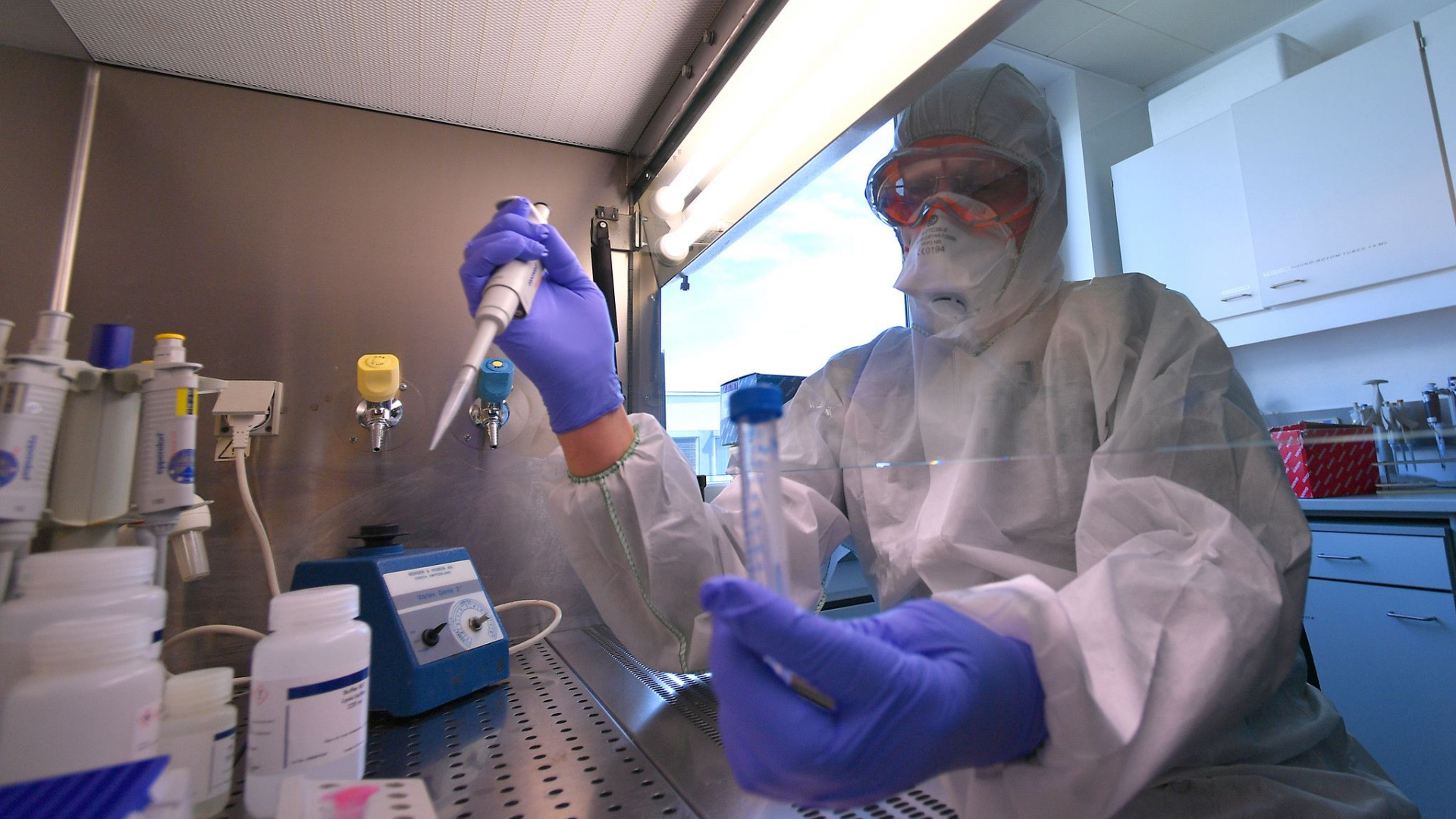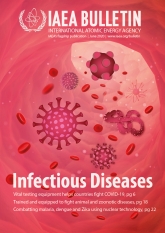
If you would like to learn more about the IAEA’s work, sign up for our weekly updates containing our most important news, multimedia and more.
Vital testing equipment helps countries fight COVID-19
Luciana Viegas
Vital testing equipment helps countries fight COVID-19
Vital equipment for detecting the COVID-19 virus reached countries worldwide in early 2020 through the IAEA’s largest ever technical cooperation project. With over 140 countries involved, this assistance has been part of the IAEA’s ongoing response to requests from countries for support in controlling the global COVID-19 outbreak. Showing strong support for the initiative, several countries also announced major extrabudgetary funding contributions for the IAEA’s efforts in helping to tackle the pandemic.
“The IAEA’s timely assistance has been critical to strengthening our capacities for detecting the COVID-19 virus,” said Susana Petrick, Head of the Peruvian Institute of Nuclear Energy (IPEN). “Although we were quick to recognize the threat and take action, we knew that we would have to rapidly increase our capacity for early identification of the virus. The equipment and reagents supplied by the IAEA contributed to enhancing our testing processing capacity and ultimately to protecting people.”
COVID-19 is a disease caused by a new coronavirus. The virus was first reported in December 2019, and, after its rapid spread worldwide, the World Health Organization (WHO) characterized the outbreak as a global pandemic in March 2020.
The IAEA’s timely assistance has been critical to strengthening our capacities for detecting the COVID-19 virus.
“IAEA staff are working hard to ensure that this critical equipment is delivered as quickly as possible where it is most needed,” said IAEA Director General Rafael Mariano Grossi in March 2020, shortly after the COVID-19 pandemic was announced. “Providing this assistance to countries is an absolute priority for the IAEA.”
In support of efforts to fight the disease, shipments to dozens of laboratories in Africa, Asia, Europe, and Latin America and the Caribbean contained diagnostic machines and kits, as well as reagents and laboratory consumables, in order to speed up national testing, which is a crucial part of containing the outbreak. The shipments also included biosafety supplies, such as personal protective equipment and laboratory cabinets for the safe analysis of collected samples.
“This equipment improves and speeds up our existing work processes, especially testing for the COVID-19 virus,” said Maja Travar, Head of the Department of Clinical Microbiology at the University Clinical Centre of the Republic of Srpska in Banja Luka, Bosnia and Herzegovina. “Given that the country’s largest number of positive cases are hospitalized at our institution, this shipment is of great importance. We can now also increase our testing capacity as well as our biosafety level, which is extremely important for providing our patients with a range of services while also protecting our staff.”
Diagnostic testing

Evaluating the results of an RT-PCR diagnostic test for COVID-19. (Photo: D. Calma/IAEA)
Many of the supplies have been for using a nuclear-derived technique called real time reverse transcription–polymerase chain reaction (real time RT–PCR), which can help to accurately detect and identify the novel coronavirus in humans, as well as in animals that may also host it, within hours. Techniques like real time RT–PCR are an important tool in the rapid detection and characterization of viruses like the one causing COVID-19. “Such tools are the only means to have certainty,” said Enrique Estrada Lobato, a nuclear medicine physician at the IAEA.
The IAEA, in collaboration with the Food and Agriculture Organization of the United Nations (FAO), has also provided guidance to countries on the detection of the COVID-19 virus through the Veterinary Diagnostic Laboratory Network, or VETLAB Network, a network of veterinary laboratories in Africa and Asia. The support has included the provision of standard operating procedures to identify the virus in line with WHO recommendations.
The IAEA has also taken part in the WHO-led COVID-19 United Nations Crisis Management Team (CMT), which was launched in February 2020 following the activation of the United Nations crisis management policy. Comprising high-level representatives from 23 agencies and organizations within the United Nations system, the CMT has met on a weekly basis to communicate key information and analyze and prioritize emerging issues, as well as to coordinate strategies, policy decisions and plans and agree on joint action to optimize the United Nations’ response to the COVID-19 global pandemic. In addition to regular meetings and communication, the CMT works with existing coordination efforts for the outbreak and has dedicated workstreams related to the pandemic, including health, travel and trade, national action planning, critical supply chain management and external communication.
The assistance provided to countries by the IAEA in tackling COVID-19 has been delivered through the IAEA’s technical cooperation programme, which supports the peaceful application of nuclear technology in areas such as human and animal health.
In addition to its own resources, the IAEA has used extrabudgetary funding for its emergency COVID-19 assistance. Donor countries continue to make extrabudgetary financial contributions to the IAEA for this purpose, and, as of early May 2020, more than €15.5 million in contributions had been made. Funding has also been provided through the IAEA’s Peaceful Uses Initiative.
“The IAEA takes pride in its ability to respond quickly to crises, as we did in the recent past with the Ebola, Zika and African swine flu viruses,” said Mr Grossi in a statement to the IAEA Board of Governors in early March 2020. “Contributing to international efforts to deal with the coronavirus will remain a priority for me as long as the outbreak persists.”
The testing infrastructure developed through the IAEA’s emergency assistance to address COVID-19 will also help countries deal with other animal and zoonotic diseases in the future. This is part of the IAEA’s broader efforts to support countries in preventing, handling and pre-empting disease outbreaks worldwide.


